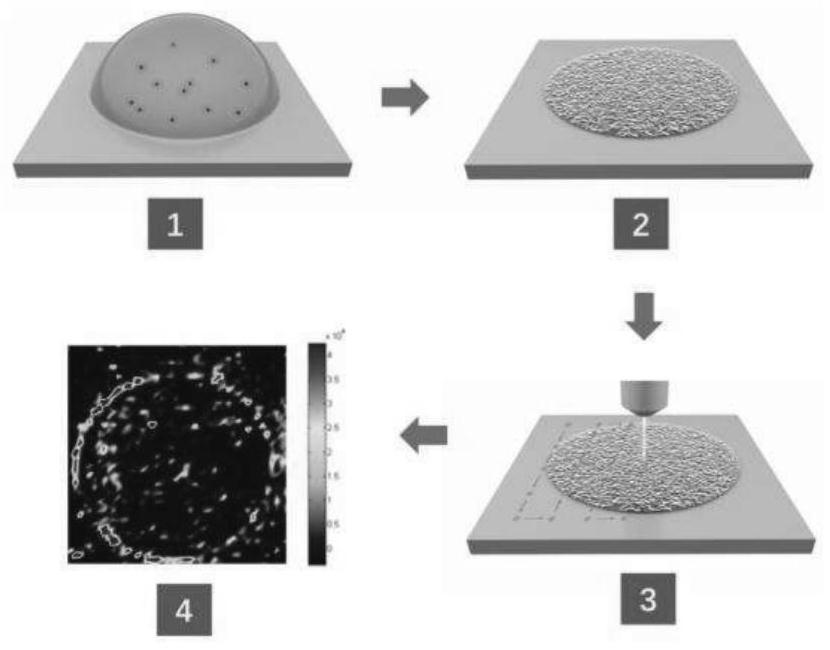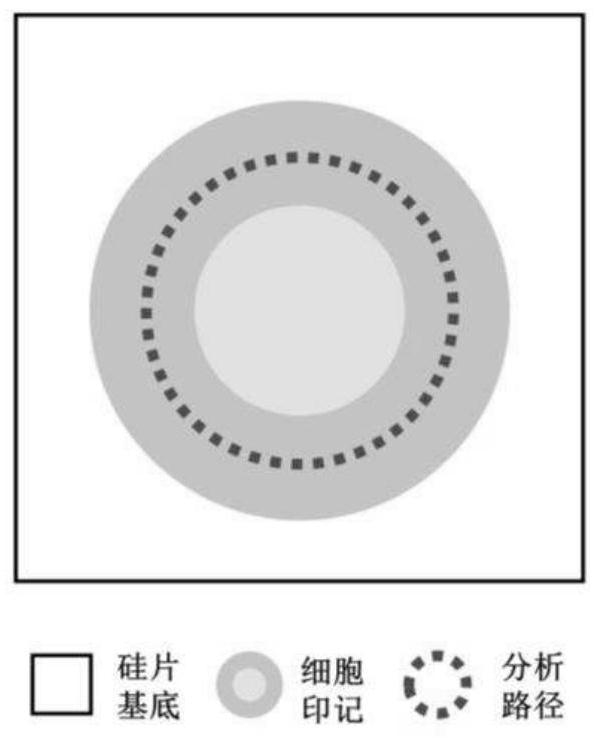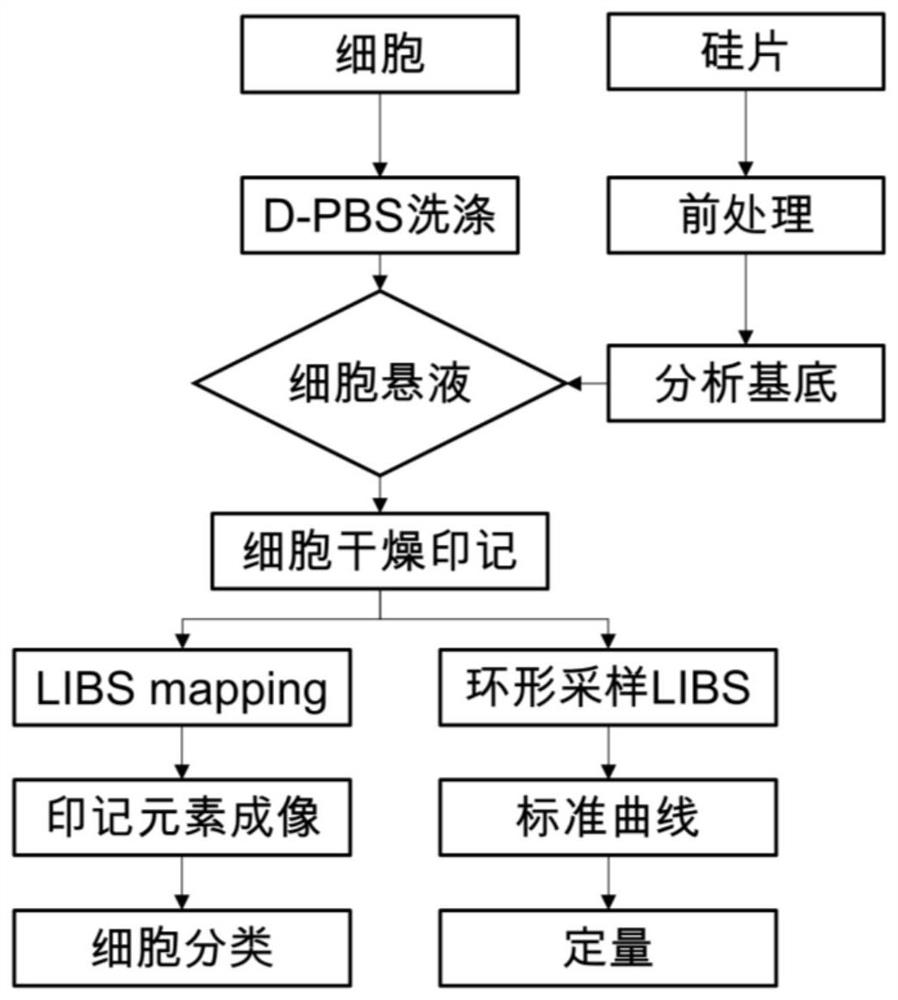Rapid cell classification and quantification method based on coffee ring
A technology of coffee rings and cells, which is applied in the field of cell detection, can solve the problems of high sample carrier cost and low signal-to-noise ratio, and achieve the effects of quantitative accuracy, improved signal-to-noise ratio, and high linear correlation
- Summary
- Abstract
- Description
- Claims
- Application Information
AI Technical Summary
Problems solved by technology
Method used
Image
Examples
Embodiment 1
[0060] Embodiment 1 Rapid cell detection method of the present invention
[0061] The rapid cell detection method of the present invention comprises the steps of:
[0062] 1. Preparation of Silicon Wafer Substrate
[0063] The 8×8mm monocrystalline silicon wafer was ultrasonically cleaned with acetone, ethanol and ultrapure water for 10 minutes, then soaked in piranha solution (ie piranha lotion) for 10 minutes, and then washed with ultrapure water for 3 times. Afterwards, the silicon wafer was soaked in hydrofluoric acid (5% by volume) for 3 minutes to complete the treatment of the substrate. At this time, the surface of the silicon wafer was clean and had a certain degree of hydrophobicity.
[0064] 2. Preparation of Cell Suspension
[0065] The cells cultured to the logarithmic phase were digested with trypsin to obtain a cell suspension, centrifuged at 1200r / min for 3 minutes to obtain a cell pellet, and the cells were washed twice with buffer and then resuspended to eli...
experiment example 1
[0074] Rapid Classification of Several Cells in Experimental Example 1
[0075] 1. Method
[0076] Human normal somatic cells and cancer cells are distinguished respectively. The normal human somatic cells are the WRL-68 human liver cell line, and the cancer cells include the Huh-7 liver cancer cell line and the A549 human non-small cell lung cancer cell line. In the same (10 6 cells / mL), 4 μL of the cell suspension was dropped onto the silicon chip analysis substrate, and after natural drying, a unique fingerprint of the distribution of cells on the substrate was obtained (the process of drying the sample to form a coffee ring is as follows: Figure 4 As shown, the fingerprints are as Figure 5 shown). The silicon substrate was fixed on the stage of the LIBS detection instrument for further analysis. The conditions of laser energy, accumulation times and delay time parameters were optimized respectively. Spectrum collection was performed under the optimal test conditions...
experiment example 2
[0081] Experimental example 2 The linear relationship between the cell concentration and the endogenous characteristic element content of the cells on the coffee ring
[0082] 1. Method
[0083] Take the A549 human non-small cell lung cancer cells of logarithmic growth, and obtain a concentration of 10 3 -10 7 cells / mL cell suspension. Take 4 μL of the cell suspension and drop it on the silicon chip analysis substrate, dry it naturally, fix it on the circular rotary displacement stage, scan the coffee ring area along the circular path, collect the spectral line signals of the endogenous characteristic elements of the cell, and accumulate the endogenous cell The spectral line intensity value of the characteristic element. The conditions of laser energy, accumulation times and delay time parameters were optimized respectively. Under the optimal test conditions of 40% energy, 100 accumulations, and 1.5μs delay time, spectral line collection and accumulation are performed. Th...
PUM
 Login to View More
Login to View More Abstract
Description
Claims
Application Information
 Login to View More
Login to View More - R&D
- Intellectual Property
- Life Sciences
- Materials
- Tech Scout
- Unparalleled Data Quality
- Higher Quality Content
- 60% Fewer Hallucinations
Browse by: Latest US Patents, China's latest patents, Technical Efficacy Thesaurus, Application Domain, Technology Topic, Popular Technical Reports.
© 2025 PatSnap. All rights reserved.Legal|Privacy policy|Modern Slavery Act Transparency Statement|Sitemap|About US| Contact US: help@patsnap.com



